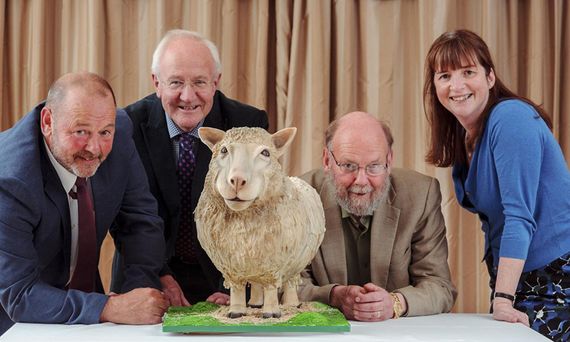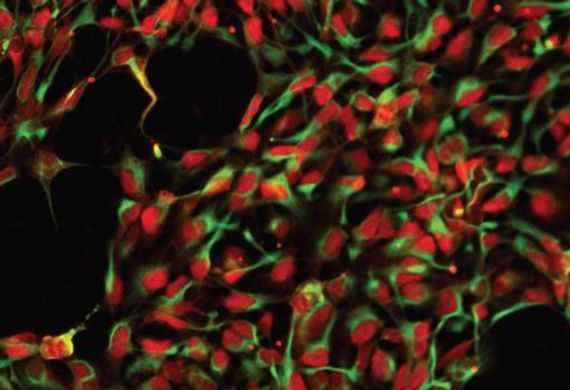On February 22, 1997, the image of a sheep was splashed across the front pages of newspapers around the world and appeared on countless television screens. Never before has another specimen of its kind achieved such fame as Dolly, the cloned female sheep presented to the world on that day by her creators at the Roslin Institute of the University of Edinburgh. It was said at the time that this advance would bring new strategies to fight against diseases. However, 22 years later, cloning seems to have disappeared from the spotlight. What is the legacy of Dolly today and of the technique that brought her into the world?

In fact, Dolly, born on july 5, 1996, was neither the first cloned animal, nor was her birth the fruit of a revolutionary new idea. Somatic Cells Nuclear Transfer (SCNT), consisting of replacing the genetic material of a zygote with that of a cell from another individual, was proposed in 1938 by the German Hans Spemann. Other researchers were later able to obtain frogs and embryos from cloned rabbit. In the 1980s, Danish scientist Steen Willadsen cloned the first sheep with genetic material from embryonic cells. The innovation contributed by Keith Campbell and Ian Wilmut, Dolly’s parents, was to obtain the first cloning of a mammal with DNA from an adult cell, specifically the mammary gland. Thus, Dolly was genetically identical to the donor of the breast cell.
Dolly was a case of reproductive cloning, which is used to create individuals identical to others. Although the famous sheep spurred a debate on the application of this technique to humans, neither then nor now has the scientific community—or the legislation of many countries—approved the creation of cloned humans.
Experimental animals, stallion recreation and de-extinction
In animals, reproductive cloning has come a long way since then, and has turned out to be more complicated than expected: the next step, the obtaining of cloned primates by SCNT, would take more than two decades. In January 2018, scientists from the Chinese Academy of Sciences published the birth of Zhong Zhong and Hua Hua, the first macaques cloned by the Dolly method. The difficulty in overcoming this challenge was that the nucleus introduced in the zygote must reprogram the cell to behave like an early embryo, but for this it was necessary to prevent certain chemical modifications—called epigenetics—of the DNA in adult cells that restrict part of its potential.

Last January, the same Chinese researchers created the first cloned monkeys copied from a genetically modified specimen, which carries an altered gene related to the biological clock. This advance illustrates one of the greatest current uses of reproductive cloning: the creation of experimental animal models for the study of diseases. In a conversation with OpenMind, George Seidel, Professor Emeritus from Colorado State University (USA) and a biotechnology expert in animal reproduction, explained that the advantage of SCNT in these cases is that “one does all of the molecular biology work with cells in vitro, and when the desired change is made, one uses the cells to make a clone with the desired change, and that animal can then be used for making additional animals from more conventional breeding methods.”
This is not the only current application of SCNT. As Seidel points out, this technique is also being used in the field of animal production to “recreate a valuable breeding bull or stallion, even making a copy before the animal dies.” Thus, he adds, “some hundreds of prize-winning cattle have been cloned.” Another application already commercialised is the cloning of pets such as dogs and cats.

Finally, SCNT can also help to build a bridge towards a still distant goal: the de-extinction of species. In 2003, Spanish and French researchers managed to clone the last specimen of the bucardo, or Pyrenean ibex (capra pyrenaica pyrenaica), although the cloned calf only survived a few minutes due to a pulmonary defect. The idea of de-extinction is popularly associated with the mammoth, which could perhaps be recreated by rescuing viable cells from the ice and injecting their nuclei into elephant ova. However, Wilmut wrote that such a project would pose added technical challenges to Dolly’s case, and that “there is no guarantee that these techniques are even biologically possible.”
The manufacture of spare organs
All the above refers to reproductive cloning, but it is the second variant, therapeutics, that promises a more direct impact on human health through the new field of regenerative medicine. In this case, the objective of SCNT is not to produce clonal individuals, but to use the embryos created to generate stem cells that permit the manufacture of spare organs from the tissues of the patients themselves.

A decade after Dolly became famous, Shinya Yamanaka, a researcher at Kyoto University (Japan), discovered a procedure that allowed cells similar to embryonic cells to be obtained in vitro from adult cells. Ethical objections, which arose in several countries as a reaction to the use of SCNT in humans, led to Yamanaka’s method for producing these induced pluripotent stem cells (iPSC) being adopted by numerous researchers. Later there would be direct reprogramming, the way to convert, for example, skin cells into neurons without going through the intermediate stage of the stem cell.
“There is no doubt that iPSCs are a tremendous tool to study cell dedifferentiation and they are playing a significant role in understanding origins and treatments of diseases,” asserts José Cibelli, professor at the State University of Michigan (USA) and one of the pioneers in cell reprogramming.

However, all this does not imply that SCNT in humans for therapeutic purposes is a dead end. According to what Yi Zhang, professor at Harvard Medical School (USA) and a world authority on embryonic epigenetics, explained to OpenMind, SCNT has the advantage that it “more closely mimics the process of nature and therefore has fewer safety concerns.” In particular, iPSC may be more subject to mutations, and with direct reprogramming “it is very difficult to achieve 100% reprogramming and thus the unreprogrammed cells may have safety concerns.” In addition, he adds, this method does not provide the large volume of cells that applications in regenerative medicine will require.
Ultimately and as Shogo Matoba, a researcher at the RIKEN Bioresource Research Centre in Japan, summarised for OpenMind, “iPSC and SCNT reprogramming technologies have advantages and disadvantages, so we need to carefully think about the potential applications of each technology depending on the situation. Dolly’s legacy is still alive and well, but until it can cure diseases, “we still need to develop better protocols of cellular differentiation and cell delivery,” concludes Cibelli.
Comments on this publication